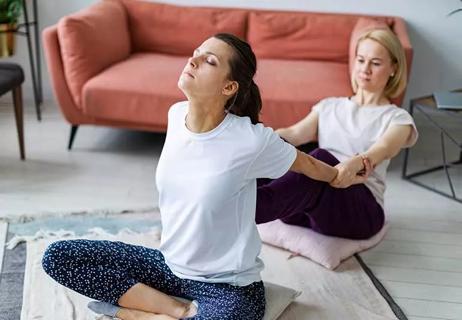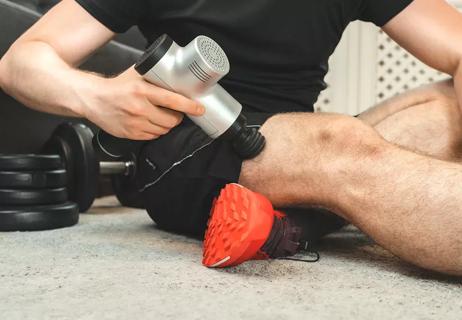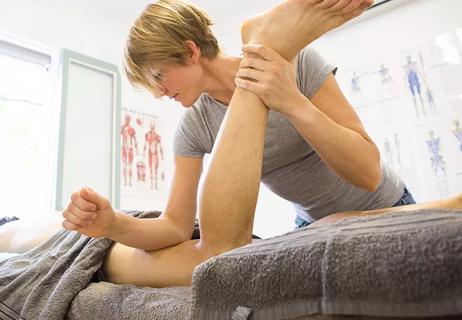A whole-body practice that undoes the effects of gravity and repetitive motions

If you’re living with chronic pain or discomfort, it’s natural to want to find whatever way you can to make it all go away. Maybe you’ve tried massage, yoga and chiropractors already.
Advertisement
Cleveland Clinic is a non-profit academic medical center. Advertising on our site helps support our mission. We do not endorse non-Cleveland Clinic products or services. Policy
And then you stumble onto a site about Rolfing. And they’re talking about integrating your whole body. And undoing the effects of gravity. And relieving all of your stress and tension. And you can’t help but wonder, “How does this really work?” We talked with licensed massage therapist Victoria Bodner, LMT, about Rolfing and how it differs from massage.
Rolfing, also called Rolfing® Structural Integration, is a form of bodywork that was created by biochemist Ida P. Rolf, PhD, in the 1940s. It was especially popular in the 1970s among people seeking alternatives to traditional medicine. It has recently seen a renewed interest.
The idea behind Rolfing is that there are purported health benefits to be gained by manipulating our fascia.
Let’s break that down a bit.
Fascia is essentially a webbing that holds all our internal body parts in place. It’s connective tissue that keeps your organs where they should be. Fascia surrounds your muscles. It stabilizes your bones. There is fascia attached to every muscle, tendon, ligament, bone and tissue in your body.
“Fascia is what makes your body glide. Your muscles give you power, but it’s the fascia that makes your muscles move about easily,” Bodner explains.
Advertisement
Rather than manipulating your bones like a chiropractor, or your muscles like a massage therapist, Rolfers target fascia, which they say can help treat various ailments. Rolfing also incorporates movement education in their practice. The Dr. Ida P. Rolf Institute describes this as exploring “the sensations of freer and more fluid motion during breathing, walking, bending, lifting and other simple daily movements.”
Rolfers say that the effects of gravity and repetitive movement get our fascia all bound up. Congested fascia, according to Rolfing, can result in:
Rolfing practitioners use their hands, knuckles, elbows and more to “release, realign and balance the whole body,” according to the Dr. Ida Rolf Institute website. The idea is that by creating more space in the fascia, you’ll release tension and free up space inside of your body.
Rolfing and massage are both hands-on approaches to releasing tension and bringing about physical and emotional relief. They differ in a few key ways, though.
One major difference between Rolfing and massage is that a massage therapist will work with you to address specific areas of concern. Rolfing is a full-body protocol.
“Sometimes, a massage therapist will practice myofascial release, which is a technique that aims to ease tension in the fascia,” Bodner says. “Massage therapists, though, may focus on a specific area where you’re experiencing discomfort. Rolfing is more about elongating fascia all across your body.”
The effects of a good massage can leave you feeling looser and more relaxed for some time. Rolfing, on the other hand, focuses on realigning and integrating your whole body and creating structural changes. The goal is to find long-lasting relief.
“The idea behind Rolfing is that they are ‘reorganizing’ your tissue,” Bodner says. “Some people see it as kind of a reset button to undo some pains and stress and start over with a new comfort in your body.”
Some forms of massage are more relaxing, while others use more pressure. Consider a quiet spa rub-down versus a deep tissue massage technique. One New York Times story says, “Rolfing has a reputation for being aggressive.” Although, different practitioners may follow different approaches to pressure.
Of course, anytime you have bodywork done, whether with a massage therapist or another practitioner, you should feel empowered to speak up if you’re experiencing pain.
Advertisement
“Fascia isn’t always easy to manipulate,” Bodner states. “Because of that, sometimes Rolfing may need to be more intense depending on the situation.”
Any pain or discomfort associated with fascia manipulation is likely to last only during a session. It shouldn’t linger around after.
While based on some proven scientific theories, more research is needed to better understand the safety and risks of Rolfing.
A few small studies have shown Rolfing may help with back pain and fibromyalgia. Another study suggests that Rolfing improved walking in a group of children living with cerebral palsy. Those studies were all done with very small groups of participants, though, and the results haven’t been replicated.
“The idea of manipulating fascia to improve your movement makes good scientific sense,” Bodner says. “We know that fascia gets congested and can lead to pain and tension.”
Bodner says that if you choose to consider Rolfing, make sure you choose a certified practitioner. People living with pain caused by tightened fascia may also want to consider more well-studied therapies like:
Advertisement
Learn more about our editorial process.
Advertisement

Medical massage is tailored to your health needs to help you recover

By focusing directly on your pain points, you may find short- and long-term relief with this type of massage

This treatment may reduce stress, relieve pain and allergy symptoms, and help with sinus pressure

The same things you do to treat sore muscles after exercise can help treat soreness after a massage

Focused on stretching and yoga poses, it can increase flexibility and ease back pain

These percussive devices can help relax muscles when seeing a masseuse isn’t an option

A massage can release stress, soothe muscles and alleviate pain

The ‘sunshine vitamin’ is found naturally in some fish and is added to other foods

Autism and ADHD often go hand in hand, giving rise to the term AuDHD

The Yuzpe regimen is less effective than other forms of emergency contraceptives, and it’s associated with more side effects